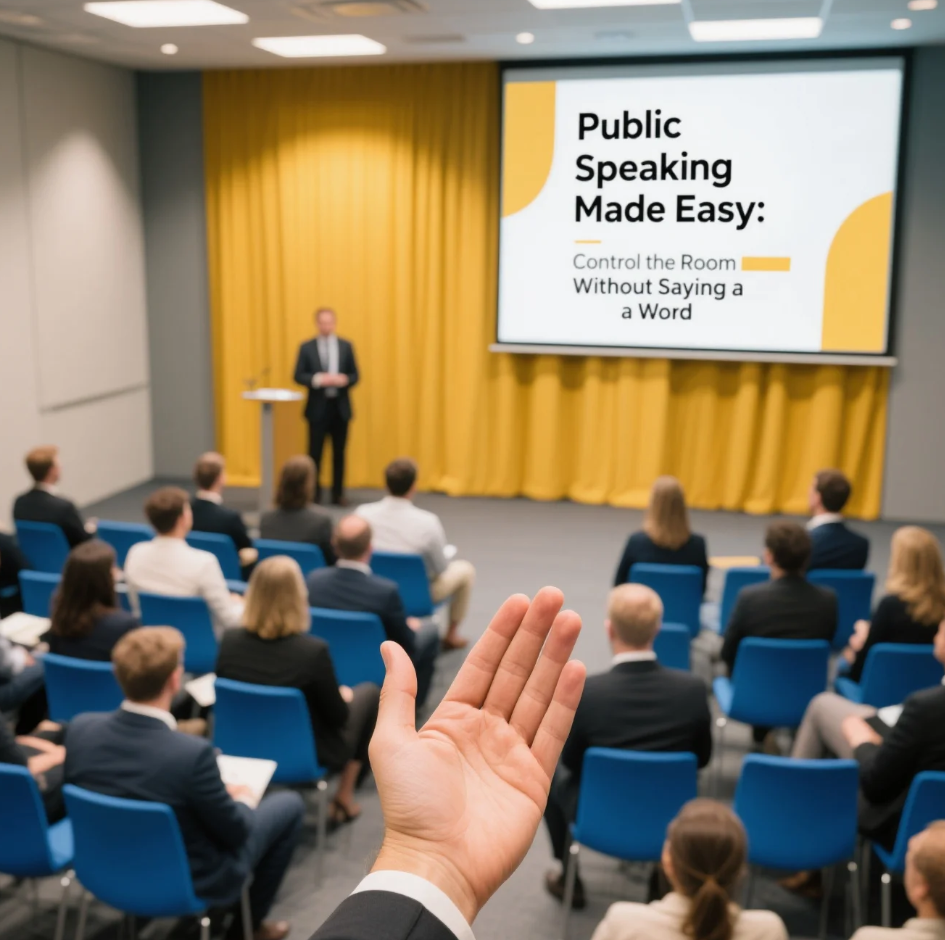In a world where communication is often reduced to hurried text messages and emojis, we sometimes forget how much our bodies still speak for us. It’s easy to focus on polished resumes, eloquent emails, or even the perfect tone of voice, but there’s another channel transmitting information—one that most of us use every day without even realizing it. Body language. Whether you’re at a job interview, on a first date, negotiating a deal, or comforting a friend, your nonverbal signals often carry more weight than your words. And the fascinating part? People are reading you all the time, whether you’re aware of it or not.
Imagine walking into a room full of strangers. You haven’t said a word yet, but your posture, facial expressions, and gestures are already telling a story. Maybe your shoulders are stiff with anxiety, or your smile feels forced. Even before you introduce yourself, people are making subconscious judgments—are you confident? Approachable? Honest? This is the unspoken reality of nonverbal communication, and it’s far more influential than most of us care to admit. In fact, experts in behavioral psychology and interpersonal communication have long argued that body language can make or break how people perceive you.
Think about high-stakes moments in life, like a job interview. You could rehearse your answers a hundred times, but if you don’t maintain eye contact or your arms stay tightly crossed the entire time, you might unintentionally come across as insecure or disinterested. Hiring managers often rely on subtle cues when evaluating candidates, even when they don’t realize it. Positive body language—like an open stance, nodding in response, and a calm, steady gaze—signals confidence and professionalism. These impressions often stick far longer than the words you say.
It’s not just formal settings where body language matters. In romantic relationships, it’s often the unspoken that speaks volumes. A warm touch on the arm, a lingering gaze, or leaning in slightly during conversation can create feelings of intimacy and trust. On the flip side, when someone folds their arms, avoids eye contact, or angles their body away from you during an argument, it can feel like they’re emotionally withdrawing—even if their words are saying “I’m listening.” These physical cues tap into a more primal understanding of connection, shaped long before we had spoken language.
Social dynamics also hinge heavily on physical presence. Ever noticed how the most charismatic people seem to “own” the room the moment they step in? They often don’t say much at first, but their confident walk, upright posture, and calm but engaging expressions immediately draw attention. This isn’t magic—it’s body language in action. Social confidence is often perceived before it’s confirmed verbally. That’s why leadership development programs, public speaking workshops, and executive coaching all focus heavily on nonverbal communication. Being able to “read the room” and adjust your body language accordingly is a key skill for anyone hoping to lead, influence, or inspire.
The fascinating part about nonverbal communication is that it’s largely universal. While there are cultural nuances, many facial expressions—like a smile, a frown, or a scowl—are instinctively understood around the world. A baby knows a genuine smile from a fake one long before it can talk. A dog can sense fear by the way you hold your body. In many ways, body language is the original human language, deeply rooted in our evolutionary past. Even in our tech-saturated lives, we instinctively respond to physical cues more than to what’s being said. That’s why in high-stress situations, such as crisis negotiation or law enforcement, professionals are trained to analyze micro-expressions and posture to determine intent or truthfulness.
Of course, understanding your own body language is just one side of the coin. Being able to read others is equally powerful. People who are skilled in emotional intelligence often excel at observing subtle shifts in posture, gaze, or tone that reveal unspoken feelings. Think of a friend who says they’re “fine,” but their downturned eyes and slouched posture say otherwise. Or a coworker who claims to be onboard with your proposal, yet avoids eye contact and fiddles nervously with their pen. These aren’t random gestures—they’re telling signs. Those who know how to interpret them often navigate social situations more smoothly, avoiding misunderstandings and building stronger connections.
Even in parenting, body language plays a critical role. A child may not always understand complex verbal instructions, but they are experts at reading faces and posture. A calm presence and gentle eye contact can diffuse tantrums faster than yelling ever could. Parents who are aware of their own nonverbal signals often find they communicate more effectively with their kids—not because they say the perfect words, but because their children feel emotionally safe.
In the digital age, where virtual meetings have become the norm, body language hasn’t disappeared—it’s just been cropped to fit within the confines of a screen. In fact, nonverbal cues like nodding, smiling, or leaning in become even more important when facial expressions and gestures are the main tools you have. Anyone who has sat through a Zoom call where a colleague appears disengaged or distracted knows how easily a lack of visual presence can affect team morale or trust.
But perhaps one of the most underestimated areas where body language makes a difference is personal confidence. How you carry yourself can literally influence how you feel inside. Research on “power posing” suggests that adopting confident body positions—even if you don’t feel confident—can trick your brain into releasing hormones that reduce stress and increase feelings of self-assurance. It’s a classic case of fake it till you make it, but with a fascinating neurological twist. Standing tall, relaxing your shoulders, and maintaining steady eye contact might feel uncomfortable at first, but over time, these gestures can become second nature—and the internal transformation follows.

In many ways, understanding and mastering body language is like unlocking a secret superpower. It doesn’t just help you present better or persuade more effectively—it deepens relationships, enhances empathy, and even shapes your sense of self. From the smallest everyday interactions to the most defining moments of our lives, our bodies are constantly speaking on our behalf. And when we finally start listening to what they’re saying, both in ourselves and others, the world becomes a much more readable—and relatable—place 😊













Leave a Reply